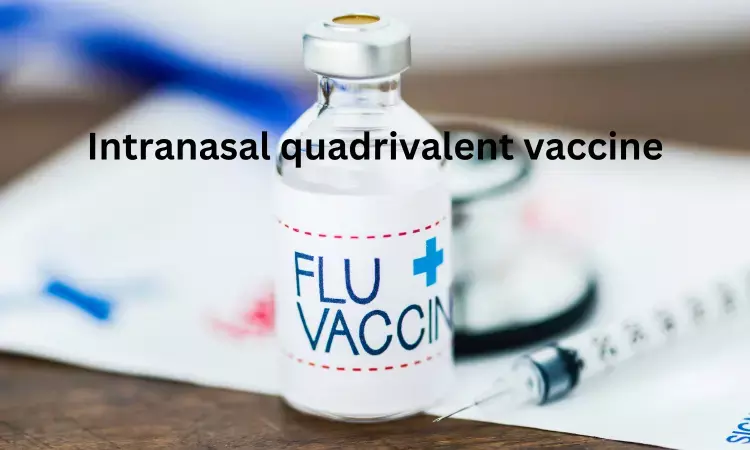- Home
- Medical news & Guidelines
- Anesthesiology
- Cardiology and CTVS
- Critical Care
- Dentistry
- Dermatology
- Diabetes and Endocrinology
- ENT
- Gastroenterology
- Medicine
- Nephrology
- Neurology
- Obstretics-Gynaecology
- Oncology
- Ophthalmology
- Orthopaedics
- Pediatrics-Neonatology
- Psychiatry
- Pulmonology
- Radiology
- Surgery
- Urology
- Laboratory Medicine
- Diet
- Nursing
- Paramedical
- Physiotherapy
- Health news
- Fact Check
- Bone Health Fact Check
- Brain Health Fact Check
- Cancer Related Fact Check
- Child Care Fact Check
- Dental and oral health fact check
- Diabetes and metabolic health fact check
- Diet and Nutrition Fact Check
- Eye and ENT Care Fact Check
- Fitness fact check
- Gut health fact check
- Heart health fact check
- Kidney health fact check
- Medical education fact check
- Men's health fact check
- Respiratory fact check
- Skin and hair care fact check
- Vaccine and Immunization fact check
- Women's health fact check
- AYUSH
- State News
- Andaman and Nicobar Islands
- Andhra Pradesh
- Arunachal Pradesh
- Assam
- Bihar
- Chandigarh
- Chattisgarh
- Dadra and Nagar Haveli
- Daman and Diu
- Delhi
- Goa
- Gujarat
- Haryana
- Himachal Pradesh
- Jammu & Kashmir
- Jharkhand
- Karnataka
- Kerala
- Ladakh
- Lakshadweep
- Madhya Pradesh
- Maharashtra
- Manipur
- Meghalaya
- Mizoram
- Nagaland
- Odisha
- Puducherry
- Punjab
- Rajasthan
- Sikkim
- Tamil Nadu
- Telangana
- Tripura
- Uttar Pradesh
- Uttrakhand
- West Bengal
- Medical Education
- Industry
Intranasal quadrivalent live attenuated flu vaccine protects toddlers from hospital contacts

A quadrivalent influenza (flu) vaccine was particularly designed to protect against four different flu viruses, including two influenza A viruses and two influenza B viruses. Several years flu vaccines were designed to protect against three different flu viruses: an influenza A(H1N1) virus, an influenza A(H3N2) virus and one influenza B virus. Adding a B virus from the second lineage was done to give broader protection against circulating flu viruses.
A new study aimed to assess the real-world effectiveness of quadrivalent live attenuated influenza vaccines (LAIV-4) against influenza-related hospital contacts and admission and morbidity as there is scarce evidence on the real-world effectiveness of LAIV-4 in younger children.
The study published in The Lancet Child and Adolescent Health reports LAIV-4 For children aged 2-6 years, receipt of the quadrivalent live attenuated influenza vaccine was associated with a significantly lower rate of flu-related hospital contacts than being unvaccinated, but vaccination showed no associated with reduction in respiratory tract infection asthma, wheezing and antibiotic prescriptions.
Researchers searched nationwide Danish health-care registries, and designed a cohort study that emulates a target trial, comparing LAIV-4 to no vaccination in children aged 2–6 years. Eligible children vaccinated from Oct 1, 2021, to Jan 15, 2022, were matched to unvaccinated controls in a 1:1 ratio according to demographic characteristics and risk groups for influenza, and followed-up until May 31, 2022. Primary study outcomes any hospital contact for influenza and influenza-related hospital admissions more than 12 h in duration, while hospital admission for respiratory tract infections, or for wheezing or asthma, and antibiotic prescriptions were evaluated as secondary outcomes. They estimated incidence rate ratios (IRRs) and 95% CIs using Poisson regression for each outcome. Vaccine effectiveness was calculated as 1 – IRR.
The key findings of the study are
• A total of 308 520 Danish children aged 2–6 years, out of which 95 434 vaccinated children were matched with 95 434 unvaccinated children who acted as controls.
• Receipt of LAIV-4 compared with no vaccination was associated with a reduced IRR of 0•36 (95% CI 0•27 to 0•46) and estimated vaccine effectiveness of 64•3% (53•6 to 72•6) against influenza-related hospital contacts (76 vs 210 events).
• The corresponding IRR and vaccine effectiveness against influenza-related hospital admissions were 0•63 (0•38 to 1•05) and 36•9% (–5•2 to 62•1; 24 vs 38 events), respectively.
• LAIV-4 was not associated with reductions in admission rates for respiratory tract infections (IRR 1•14, 95% CI 0•94 to 1•38), wheezing or asthma (1•04, 0•83 to 1•31), or antibiotic prescriptions for respiratory tract infections (0•97, 0•93 to 1•00).
• Vaccine effectiveness assessed across risk groups for influenza showed similar effectiveness in children with and without coexisting risk factors for severe influenza.
Researchers concluded that “LAIV-4 offered moderate protection in younger children against influenza-related hospital contacts during a season dominated by influenza A(H3N2); however vaccination was not associated with reductions in secondary outcomes. This real-world study thereby supports trial evidence of moderate vaccine effectiveness of LAIV-4 against influenza-related outcomes when implementing broad vaccination schedules in younger children.”
Reference: Helene Kildegaard, MD, Lars Christian Lund, PhD, Anton Pottegård, DMSc, Lone Graff Stensballe, DMSc; Effectiveness of the quadrivalent live attenuated influenza vaccine against influenza-related hospitalisations and morbidity among children aged 2 to 6 years in Denmark: a nationwide cohort study emulating a target trial; October 25, 2023DOI:https://doi.org/10.1016/S2352-4642(23)00225-0.
MSc. Neuroscience
Niveditha Subramani a MSc. Neuroscience (Faculty of Medicine) graduate from University of Madras, Chennai. Ambitious in Neuro research having worked in motor diseases and neuron apoptosis is interested in more of new upcoming research and their advancement in field of medicine. She has an engrossed skill towards writing and her roles at Medical dialogue include Sr. Content writer. Her news covers new discoveries and updates in field of medicine. She can be reached at editorial@medicaldialogues.in
Dr Kamal Kant Kohli-MBBS, DTCD- a chest specialist with more than 30 years of practice and a flair for writing clinical articles, Dr Kamal Kant Kohli joined Medical Dialogues as a Chief Editor of Medical News. Besides writing articles, as an editor, he proofreads and verifies all the medical content published on Medical Dialogues including those coming from journals, studies,medical conferences,guidelines etc. Email: drkohli@medicaldialogues.in. Contact no. 011-43720751


